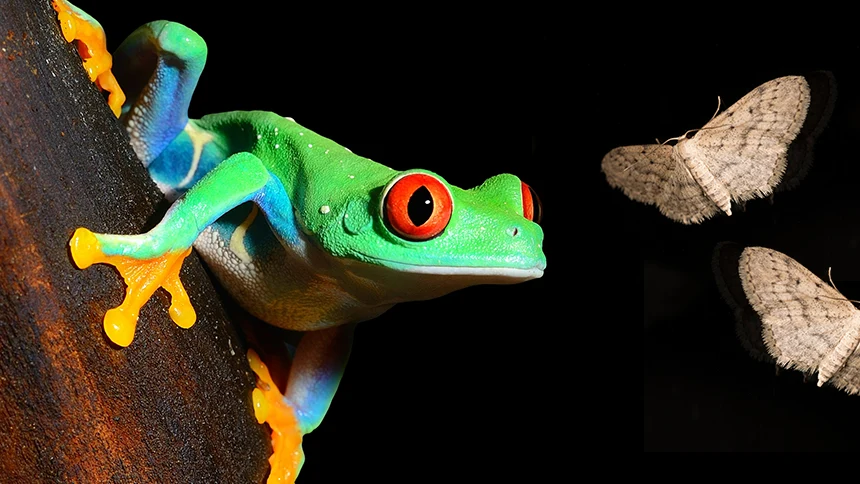
What Do Tree Frogs Eat?
Tree frogs are fascinating creatures that can be found in many different parts of the world. They come in a variety of colors and sizes, and each type of tree frog has its own unique diet.
Most tree frogs eat flies, wasps, or crickets, while others prefer to dine on worms or even small beetles.
In this article, we will take a closer look at what tree frogs eat and provide some examples for both wild and captive tree frogs.
Page Contents
So, What Do Tree Frogs Eat?
Tree frogs are predators and their diet consists of insects, such as flies, ants, true bugs, bees, worms, beetles, isopods, wasps, spiders, and crickets.
Keeping a frog healthy in captivity can be difficult because they don’t have the same access to food as they would in the wild. For this reason, it’s important to supplement their food but more about that later.
For now, let’s take a closer look at the list of things tree frogs eat.
- Flies – Lepidoptera and Diptera are two types of insects. Lepidoptera includes butterflies and moths, while Diptera includes mosquitoes, flies, and gnats. Both groups include a wide variety of species that have different diets and habits.
- Ants, Bees – They are distinguished by their two pairs of wings (the front pair being smaller than the hind pair), and the way their antennae are attached to their head.
- Beetles – Coleoptera is the largest order of insects in the world, and includes more than 360,000 species. Beetles make up the majority of this order, with over 300,000 different species. They can be found all over the world, in nearly every type of habitat.
- Worms – Annelids are a type of worm that can be found in both freshwater and marine environments. They are segmented worms, meaning they have distinct body segments, and they range in size from just a few millimeters to several meters long. Some common annelid species include earthworms, leeches, and ragworms.
- Spiders – Arachnids are a class of invertebrates that includes spiders, scorpions, and ticks. They are characterized by their eight legs and two body parts. Arachnids have existed for over 400 million years and can be found on every continent except Antarctica.
Large tree frogs are capable of eating small fish, reptiles, and other amphibians.
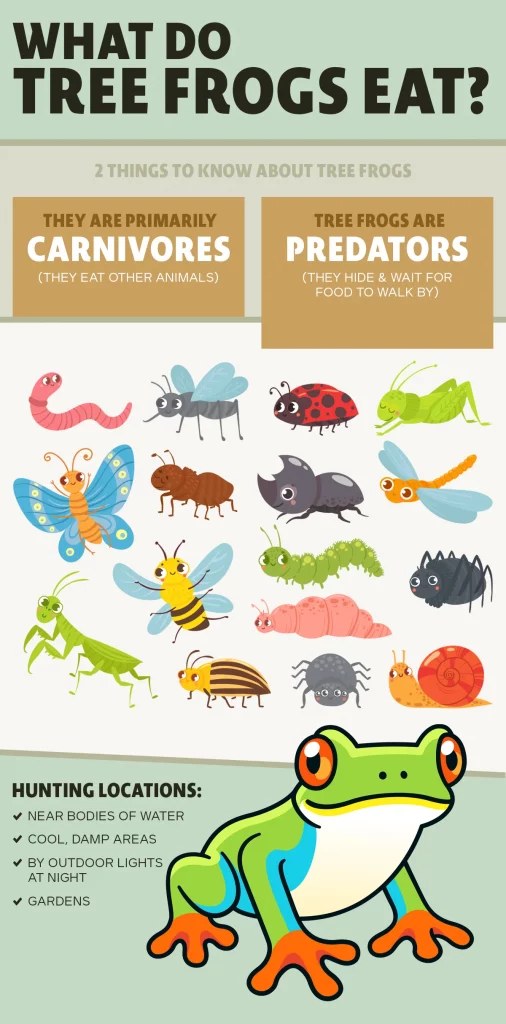
How Tree Frogs Eat
Now that we know what tree frogs eat, let’s take a look at how they catch and swallow their prey.
Tree frogs have long tongues that they use to capture their prey. The tongue is attached to the front of the frog’s mouth and can be extended up to twice the length of the frog’s body.
The tongue is sticky, which allows the frog to catch insects in mid-flight. Once an insect is caught, the frog quickly retracts its tongue and swallows the prey whole.
Frogs also have teeth, but these are not used for chewing food. Instead, they are used for gripping onto slippery surfaces and for holding onto struggling prey.
Feeding Tree Frogs in Captivity
As we mentioned earlier, keeping a frog healthy in captivity can be difficult because they don’t have the same access to food as they would in the wild.
It’s important to dust the live insects with vitamin and mineral powder before feeding them to your frog. This will help ensure that your frog is getting the nutrients it needs.
Feeder Insects

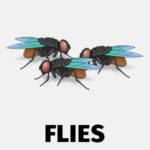
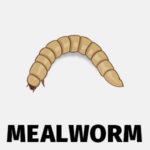
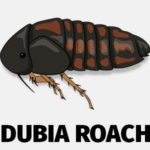
Most pet stores sell feeder insects, also known as “feeders”, that are available to purchase. To keep up with demand, they get shipments several times per week or produce their own. The most popular feeders for reptiles and amphibians are:
- Crickets
- Mealworms
- Dubia Roaches
- Wingless Fruit Flies
Crickets are the most frequently used feeder insect by reptiles and amphibians. They’re simple to grow, inexpensive, and available in a variety of sizes.
Reptile Supplements
Reptile supplements, such as vitamins and calcium, are important for the health of captive reptiles and amphibians. Dust feeder insects with the supplements to ensure that your pet gets the nutrients it needs.
- Get a container that can hold the feeder insects you plan to dust with the vitamin powders.
- Place the feeders in the container.
- Sprinkle the vitamin powders over the feeders.
- Gently mix the powders into the feeders.
- Place the feeder insects into your tree frog’s enclosure
One final tip for feeding tree frogs is to wait until just before night time. Most treefrogs are nocturnal, and prefer to eat at night.
Related: What Do Toads Eat?
Frequently Asked Questions
This section is meant to ask some of the most common questions regarding a tree frog’s diet.
Yes, tree frogs require live, healthy insects in order to remain healthy. In fact, most tree frogs won’t even acknowledge dead insects. Frogs are predators and they enjoy hunting. This means their food needs to be alive and moving.
Tree frogs do not typically bite, but they can if they feel threatened or uncomfortable. They have small, sharp teeth that they use to grip their prey. If a tree frog does bite you, it is unlikely to cause much damage.
Tree frogs can survive for a couple weeks without food, but they will become weak and lethargic. It’s important to make sure your frog has access to food on a regular schedule.
Tree frogs have many predators, including birds, snakes, lizards and other small animals. In the wild, these predators help to keep the tree frog population under control.
Some tree frogs will eat small amounts of vegetation, but this is not their primary source of food. They are mostly carnivorous and prefer live insects.
If your tree frog refuses to eat, there are a few things you can try: 1.) Offer different types of insects to see if there is a preference. 2.) Make sure the insects are properly dusted with vitamins and supplements. 3.) Wait until night time to offer the food, as most tree frogs are nocturnal. 4.) If the frog still does not show interest in eating, it’s best to take it to a reptile vet.
Featured photo image credits: Alex Stemmers, Rob Labers ARPS, Adobe Stock
TLDR; What Do Tree Frogs Eat?
Tree frogs eat a variety of live, healthy insects such as flies, beetles, worms, wasps, isopods, and spiders. Large tree frogs may be capable of eating small fish, reptiles, and amphibians.
If you’re looking for an interesting pet that is relatively easy to take care of, a tree frog may be the perfect choice for you. Tree frogs make great pets because they are relatively low maintenance, can be fed a variety of insects, and require a minimal amount of space.
Be sure to dust your feeder crickets with reptile supplements to ensure that your pet gets the nutrients it needs.

Leave a Reply